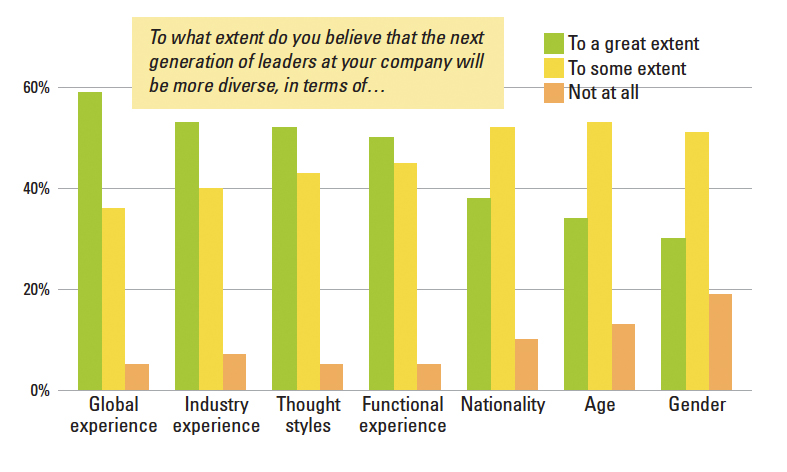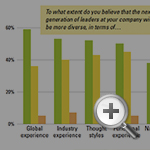Developing Tomorrow’s Global Leaders
Human resources executives believe the next generation of global executives will be more diverse. Are companies ready?
Large global companies today are increasingly led not so much by an individual or even a single team, but by an ensemble of leaders. Consisting of the top one or two percent of executives and experts, ensembles bridge a host of differences — in language, culture, time zones, experience and more. They also make it easy for groups of leaders to configure themselves according to the task at hand.
How are human resource executives at global companies preparing for a future that includes such diverse leadership groups? To find out, we surveyed 197 HR executives from global companies in 2012. We defined global companies as those operating in four or more countries across two or more continents. The companies we surveyed met these criteria, and they represented a wide variety of industries and company sizes.
The HR executives we surveyed said they believe that top leadership groups in the future will be characterized by people with greater diversity of experience and “thought styles” — for example, more analytical vs. more “by the gut” — even more than by diversity of age, nationality and gender. (See “Critical Areas of Diversity for Next-Generation Global Executives.”) “The future leaders of the company will be more diverse. Diverse in terms of race, gender and so on, but also in terms of their experiences,” observed Ellen Dubois du Bellay, senior vice president of executive office operations at Four Seasons Hotels and Resorts. “We will always make better decisions from this vantage point.”
Critical Areas of Diversity for Next-Generation Global Executives

However, HR executives are not giving priority just to a broad focus on diversity. More than 90% of the HR executives we surveyed also believe that next-generation leaders will be working more collectively in the future. Taken together, these two findings suggest that leaders from highly diverse backgrounds will need to work together more effectively.
Frustratingly, however, it’s often difficult to promote both diversity and collective action at the same time.


 View Exhibit
View Exhibit


